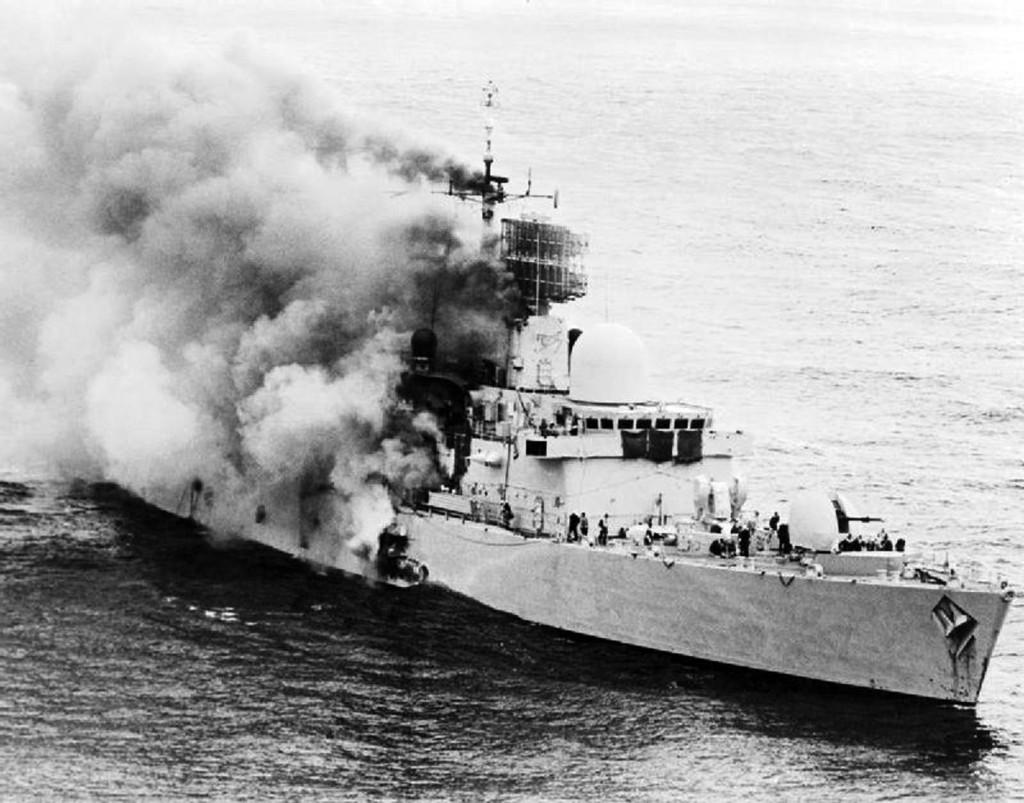
If the Pentagon’s reading of China’s interest in “Falklands-style” campaigns of long-range power projection is accurate, the task of maintaining a U.S.-centric security order in East Asia may turn out to be more manageable than expected. But the PLA Navy cannot be counted on to dilute its efforts to the extent DoD now thinks plausible.
To this day, Britain’s 1982 campaign to recapture the Falkland Islands remains among the most relevant examples both of long-range maritime power projection with limited means, and of a weaker power using niche capabilities to complicate operational access and inflict significant damage on the opponent’s projection forces.
As a valued colleague of mine has noted in a recent post here at the NextWar Blog, DoD’s latest Annual Report on Military and Security Developments Involving the People’s Republic of China explicitly picks up on the Falklands analogy in its discussion of China’s future expeditionary capabilities:
“The PLA Navy’s goal over the coming decades is to become a stronger regional force that is able to project power across the globe for high-intensity operations over a period of several months, similar to the United Kingdom’s deployment to the South Atlantic to retake the Falkland Islands in the early 1980s.”
The analogy as such is hardly new, of course, and has already spawned a small literature of its own, including Lyle Goldstein’s insightful piece in Survival and a thorough analysis by Christopher Yung. A more recent contribution by CDR Jim Griffin, USN in Proceedings makes many of the same arguments in a more implicit fashion. All three treatments suggest that the Falklands experience has considerable relevance for the PLAN in both strategic and war-fighting terms. What is new in the Pentagon report, however, is the rather one-dimensional spin it imparts to the PLAN’s adoption of the Falklands campaign as a potential paradigm for future operations.
If we accept DoD’s take on the analogy, we would expect that China will cast itself unambiguously in the role of the expeditionary power (i.e., Great Britain) and, over the next several decades, spare no efforts to attain at least a limited capability for sustained power projection over transoceanic distances. It is certainly true that this would serve the desire of many Chinese naval enthusiasts to climb the rungs of the global naval hierarchy, Felix Seidler’s discussion of which I find most useful. However, it is not yet clear that the Pentagon’s interpretation accurately reflects what Chinese strategists have in mind when they plan for “Falklands-style” campaigns.
As Robert Ross argues in his 2009 piece on “China’s Naval Nationalism,” a blue-water orientation is not a natural strategic choice for a continental power that faces multiple potential threat axes on land as well as from the sea. For such actors, access-denial strategies, broadly conceived, tend to provide a much better return on investment. Thus, to the extent that the operational requirements for access-denial and long-range power projection differ, the strong Mahanian tendency that is evident in the Chinese discourse about maritime strategy would seem to give rise to an additional diffusion of effort (brown/green-water and blue-water) within the more fundamental diffusion of effort between land and sea. (It should be noted here that, for all his insistence of control over maritime communications, such a course would have been utterly foreign to Mahan.)
In other words, given China’s current position and the many uncertainties it continues to face, any attempt at replicating the capability profile of a “Rank 3”navy [“conducting one major ‘out of area operation and (…) engaging in high-level naval operations in closer ocean areas” (Grove 1990: 238)] would amount to a distraction from its key strategic dilemmas. A transoceanic expeditionary capability, in particular, would almost certainly constitute a misinvestment of limited resources. In a very real sense, every yuan invested in dedicated long-range projection forces is a yuan not invested in the control over China’s immediate regional environment. And every Type 052D sailing the Mediterranean on anything other than a one-off port visit will mean several destroyers not sailing the West Pacific.
Of course, this is not to say that China won’t do its potential opponents the favor of going down this risky path. Speaking in broad historical terms, rising continental powers do it all the time – and suffer the consequences. But Goldstein’s and Yung’s works on the PLA’s engagement with the Falklands experience suggest that PLA planners have so far emphasized an “Argentina Plus” approach that combines the far more compatible paradigms of robust access-denial and regional power-projection, and may continue to do so for the foreseeable future.
If such is the case, there will still be more than enough to write about in the Pentagon’s next Annual Report to Congress. As far as analogies go, a much more formidable Argentina that chooses to threaten U.S. interests where it is strong seems to me a far more worrying prospect than a cut-rate Great Britain that is all over the map.
Michael Haas is a Graduate Research Assistant at the Peace Research Institute Frankfurt (PRIF), Germany. The views presented here are his alone and do not reflect an institutional perspective.

One thought on “China and the Falklands Analogy: Preparing for the Wrong War?”